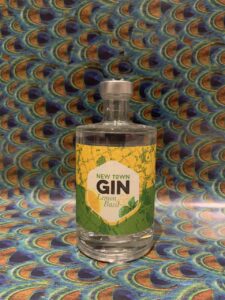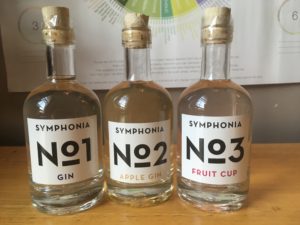Note: The team at Wharf Distillery sent me a bottle to try, as always I’ll let you know what I really think.
 Wharf Distillery are based in Towchester, a market town in South Northamptonshire, and are (currently) the only grain to glass distillery in the county. They opened in 2014 by founding team Alice, who formerly worked in a brewery, and Laurence, who made cider as a hobby until his Hard Cider won Champion Cider of Britain in 2011. This led them to experimenting with ciders, meads and apple brandy before turning to distilling. In the last six years they’ve created their own grain base spirit, which is used in their whisky, single malts, gins and vodkas, and locally source fruit for their brandies, liqueurs and aperitifs. Their range is even more extensive than it sounds, with nine gins alongside their other products. Today we are trying one of their New Town gins, a range of contemporary gins that pays homage to their base in the New Town of Milton Keynes. For this range they take their London Dry gin as a base before adding in additional botanicals. There are currently three gins in the range: orange & pomegranate, mango & cucumber, and lemon and basil. They say the lemon & basil is “perfect for those hot summer evenings”, so let’s see how it holds up in mid-December! Continue reading
Wharf Distillery are based in Towchester, a market town in South Northamptonshire, and are (currently) the only grain to glass distillery in the county. They opened in 2014 by founding team Alice, who formerly worked in a brewery, and Laurence, who made cider as a hobby until his Hard Cider won Champion Cider of Britain in 2011. This led them to experimenting with ciders, meads and apple brandy before turning to distilling. In the last six years they’ve created their own grain base spirit, which is used in their whisky, single malts, gins and vodkas, and locally source fruit for their brandies, liqueurs and aperitifs. Their range is even more extensive than it sounds, with nine gins alongside their other products. Today we are trying one of their New Town gins, a range of contemporary gins that pays homage to their base in the New Town of Milton Keynes. For this range they take their London Dry gin as a base before adding in additional botanicals. There are currently three gins in the range: orange & pomegranate, mango & cucumber, and lemon and basil. They say the lemon & basil is “perfect for those hot summer evenings”, so let’s see how it holds up in mid-December! Continue reading

